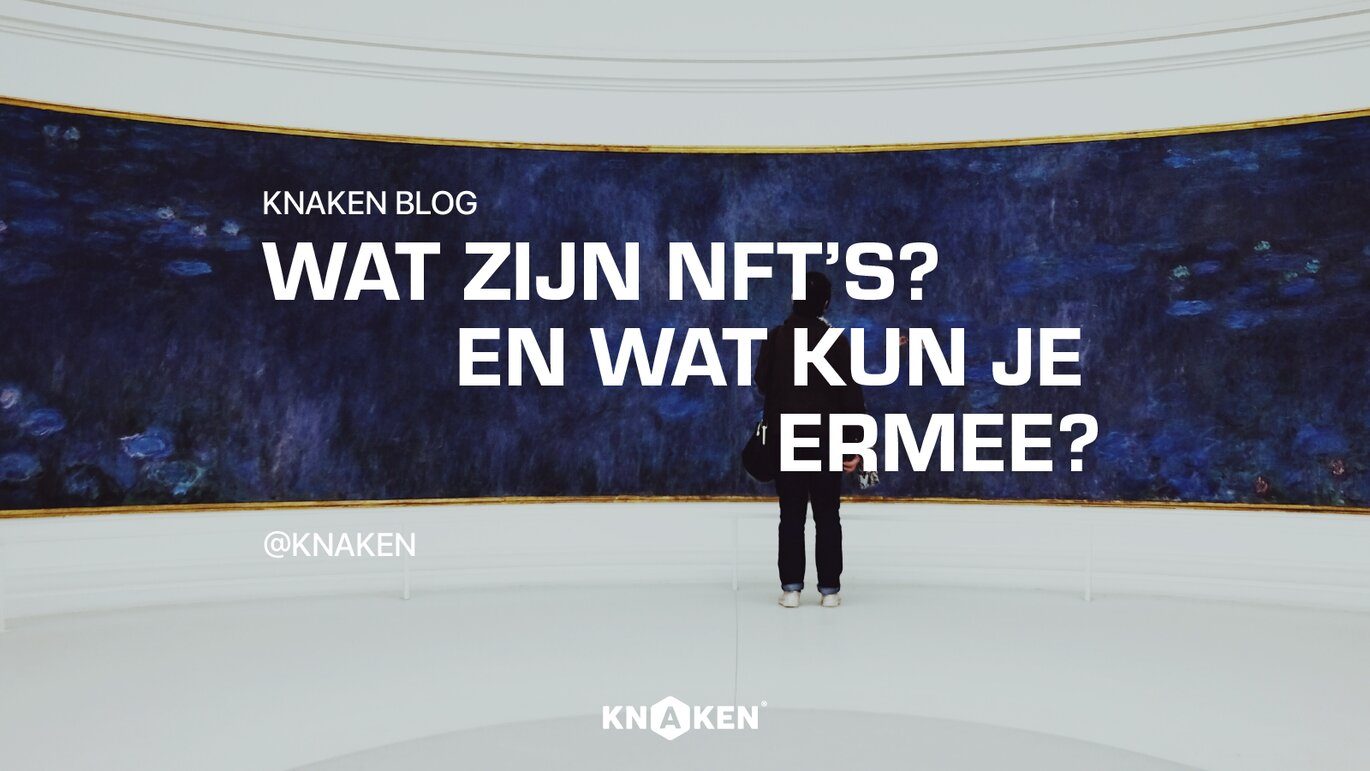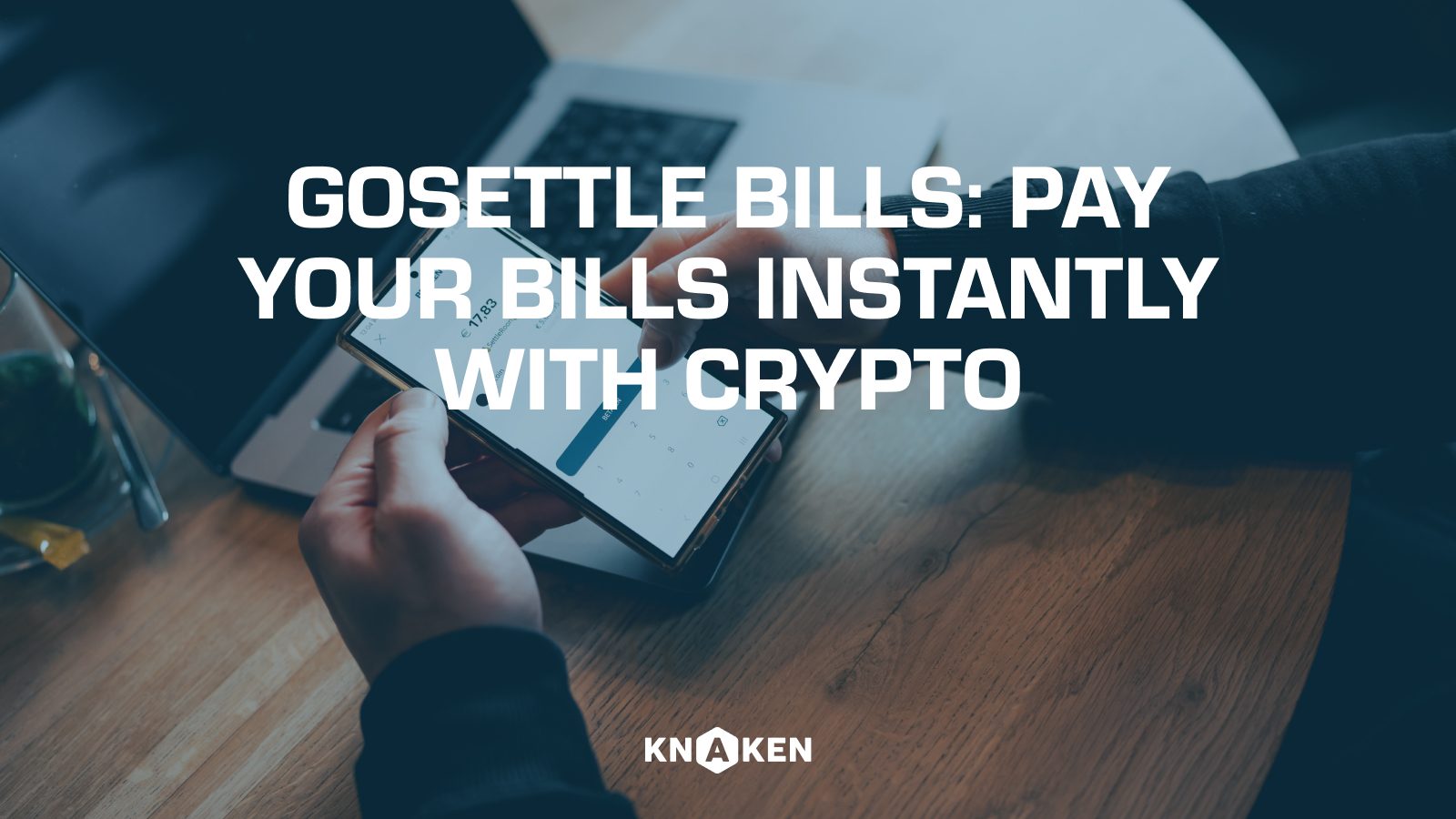

NFTs are a form of cryptocurrency that have often been in the news. In most cases, this was because a new NFT artwork was sold for hundreds of thousands, if not millions, of euros. An NFT can become incredibly valuable, and there are various reasons for this. Below, we will explain what an NFT is, how these non-fungible tokens work, and what you can do with them.
What are NFTs?
NFT stands for non-fungible token, and it is a specific type of token that runs on the blockchain. An important characteristic of NFTs is that they are unique and non-interchangeable. Each NFT has a unique attribute that makes it distinguishable from others. This offers a vast number of possibilities. Therefore, NFTs are also used in situations where normal cryptocurrencies and tokens cannot be utilized. Regular cryptocurrencies are interchangeable and not unique, which are referred to as fungible tokens.
What is fungible and non-fungible?
Something is fungible when you can exchange it for another item without noticing a difference. For example, the euro is fungible. When you pay 10 euros to a seller in a store, it doesn’t matter whether you do this with two 5-euro notes or 10 one-euro coins. Bitcoin is also fungible. It does not matter which Bitcoin you own; each Bitcoin has the same value.
When something is given a unique trait, making it distinguishable from similar items, it is called non-fungible. A painting is a perfect example of a non-fungible object. Although there are millions of paintings, each one can be distinguished from the others due to its unique characteristics.
How do non-fungible tokens work?
An NFT can run on a blockchain that provides special support for NFTs. The Ethereum blockchain is the most commonly used blockchain for NFTs. Here, an NFT utilizes a special token protocol: ERC721 and ERC1155. Such a protocol describes how tokens should be programmed to be recognized as that type of token.
In addition to Ethereum, there are several other blockchains that can host NFTs. The Binance Smart Chain (BSC) is also a popular blockchain, and we are seeing more NFTs running on Solana and Cardano. The advantage of these blockchains is that they can process transactions faster and cheaper than Ethereum. Users thus pay lower fees when purchasing an NFT on Cardano or Solana. The high transaction costs on Ethereum also have a benefit. Because users must pay fees to buy an NFT, the NFT becomes significantly more valuable.
Tokenizing
It is possible to store physical objects as tokens on the blockchain. This is called tokenizing. It involves storing the ownership of an object on the blockchain. An NFT is thus also a certificate of ownership. Once an NFT is placed on the blockchain, it is always linked to one owner. It is not possible for an NFT to have multiple owners. This makes the NFT a perfect means for storing ownership.
For example, it is possible to place a house as an NFT on the blockchain. The ownership contract would be stored in the NFT, along with all the necessary properties that can identify the house. The owner of the NFT is also the owner of the house. It is important that local laws and regulations are set up to view NFTs as legitimate evidence of ownership. More and more countries are exploring the possibilities of this.
Not to be copied
When you store an NFT in your wallet, you are the only rightful owner of the NFT. However, it is possible for anyone to save an NFT artwork as an image on their computer. That is true, but in that case, someone has not copied the entire NFT. An NFT primarily consists of code. This code is created for the blockchain and therefore cannot just run on a regular computer.
It is not possible to fully copy and paste an NFT on the same blockchain. Blockchains will see that the code is identical to another NFT, and the NFT will not be accepted. Thus, on the blockchain, only one person can be the owner of the NFT. Complete duplication is not possible.
Many use cases for NFTs
NFTs can be used for an incredible number of purposes. The characteristics of an NFT (unique, certificate of ownership, and non-interchangeable) are very useful in various sectors and industries.
Art
Many artists create so-called NFT art. This is art in the form of a JPG, PNG, JPEG, MP4, or MP3 file, which is stored as an NFT on the blockchain. Artists then sell their work on special NFT marketplaces, where art is sometimes sold for millions of euros (though this is certainly quite rare).
In fact, you can store anything as an NFT. For example, the first Tweet by Twitter founder Jack Dorsey was sold as an NFT. The code of this tweet was stored as an NFT on the blockchain and then auctioned. A lot is possible with NFT art.
Gaming
Developers can create a game and run it on the blockchain. In these games, players can collect in-game items that are stored as NFTs. The advantage is that these in-game items are genuinely owned by the player, and they can sell these items to other players. Thus, it is possible to earn money by playing a game. This industry is called GameFi (Game Finance), and such games are called Play-to-Earn (P2E).
Collectibles
Anything could be stored as an NFT on the blockchain, think of collectibles. In 2022, the notes Paul McCartney (The Beatles) wrote for ‘Hey Jude’ were sold as NFTs by Julian Lennon, son of John Lennon. This NFT raised over 65,000 euros (the proceeds were donated to charity).
Where can you buy and sell NFTs?
You buy and sell NFTs on special NFT marketplaces. These are websites where creators and owners of NFTs can place their tokens. They can sell their NFTs in various ways. They have the option to set a fixed price, but they can also start an auction. Buyers can then place a bid on the NFT, after which it is sold to the highest bidder when the time is up.
Depending on the blockchain, you have various types of NFT marketplaces to choose from. OpenSea is the most well-known marketplace on the Ethereum blockchain. If you want to buy an NFT on Solana, you can use Solsea. Binance has its own page for NFTs running on the Binance Smart Chain within their exchange.
To buy an NFT, you need to connect an external wallet to the marketplace. The wallet you connect must support the blockchain that the NFTs and marketplace run on. If you purchase an NFT on OpenSea, for example, you will need a Metamask wallet. In this wallet, you will also need cryptocurrencies with which you can pay for the NFT. After the purchase, the NFT is moved to your wallet. An NFT is a token, and you store it in a crypto wallet.
Conclusion
NFT stands for non-fungible token and is exactly what the name suggests: a non-interchangeable token. People can literally store anything as an NFT on the blockchain. The NFT serves as a certificate of ownership, and the holder of the NFT is the sole and rightful owner of the certificate. Since each NFT has a unique trait, all NFTs can be distinguished from each other.
The characteristics of an NFT are incredibly useful for a wide range of purposes. For instance, NFTs are frequently used for NFT art, which is a form of art where artworks are stored as NFTs on the blockchain. There are also many games in which users can collect and resell in-game NFT items. This can make playing P2E games a lucrative endeavor.
If you want to buy or sell an NFT, you will need to go to a special NFT marketplace. This is a platform where buyers and sellers of NFTs come together. The best-known NFT marketplace is OpenSea, which runs on the Ethereum blockchain. Each blockchain has its own NFT marketplace(s). Despite frequently hearing in the news that NFTs sell for a lot of money, you can also lose a lot of money with NFT trading. Therefore, always do thorough research on NFTs and do not invest money that you cannot afford to lose.



Knaken Cryptohandel B.V. has applied for a MiCA license from the Netherlands Authority for the Financial Markets (AFM). This application is currently being assessed by the AFM.
Investing in crypto-related products involves significant risks.















